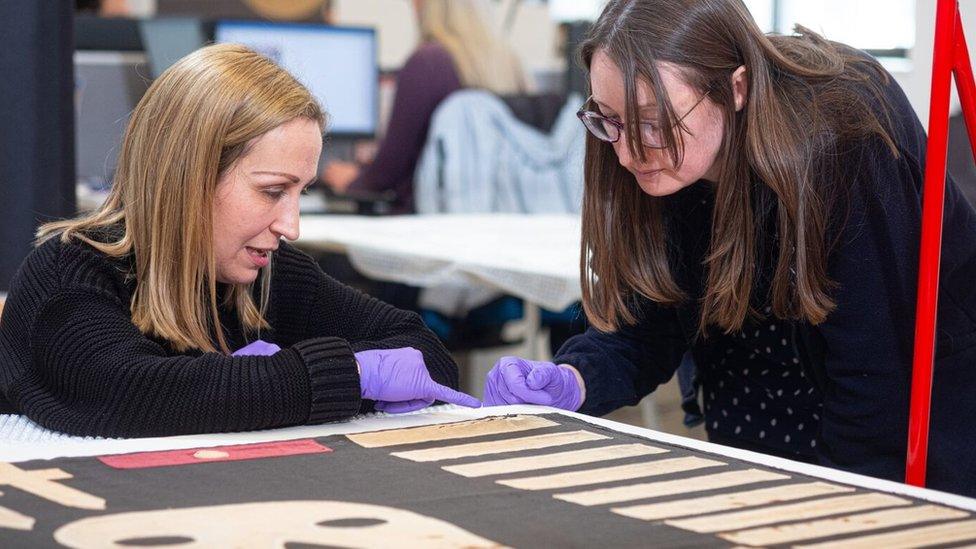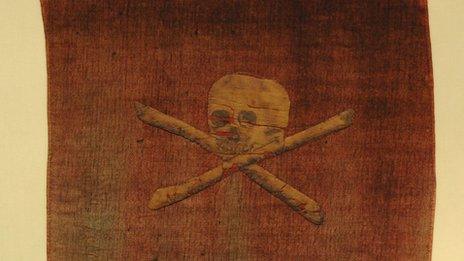Portsmouth's Royal Navy Submarine Museum waves new Jolly Roger
- Published

The new flag was flown over a century ago in 1916 from HMS E54
A new display at the Royal Navy Submarine Museum aims to shed some light on what it calls the "little-known" history of the Jolly Roger flag.
Portsmouth Historic Dockyard museum said the Jolly Roger was often thought of as a pirate flag.
Royal Navy submarines have used it to show success and pride when returning from war.
The earliest surviving example of a Royal Navy submarine Jolly Roger is on show at the exhibition.
The flag was flown over a century ago in 1916 from HMS E54.

Some of the flags carry symbols which give clues to actions carried out by submariners during conflicts
There will also be an opportunity for visitors to create their own interactive flag at the museum.
Commonly 17th Century pirates raised their flags to frighten ships.
The post-battle naval tradition started in 1914 as Lt Cdr Max Horton, the captain of HMS E9, flew the flag as the boat returned after sinking the German warship SMS Hela.
This was Horton's response to comments made by Adm Sir Arthur Wilson in 1901, who had likened submariners to pirates.
Some of the flags carry symbols which give clues to actions carried out by submariners during conflicts.

Curators Kate Braun and Alexandra Geary inspect the Jolly Rogers ready for display
Alexandra Geary, a curator from the National Museum of the Royal Navy, said: "A dagger, for example, would denote a secret mission, a bar signifies the sinking of an enemy merchant ship, a lighthouse [means] the boat was used as a navigation beacon, and we even have a symbol of Popeye character "Eugene the Jeep" as a nod to the popular utility vehicle."Visitors are intrigued by our Jolly Rogers and enjoy deciphering their meanings.
"They give a fascinating insight into the often secret and mysterious world of the submariner under the waves and out of sight."
The title Jolly Roger is thought to come from the French phrase "joli rouge" which means "pretty red".
The original pirate flags were blood red rather than black and white and this signalled that no mercy would be given once the pirates boarded and battle ensued.
The skull and cross bones came from the symbol used in ships' logs, where it represented death on board.

Follow BBC South on Facebook, external, X, external, or Instagram, external. Send your story ideas to south.newsonline@bbc.co.uk or via WhatsApp on 0808 100 2240, external.
Related topics
- Published8 June 2016

- Published14 December 2011
